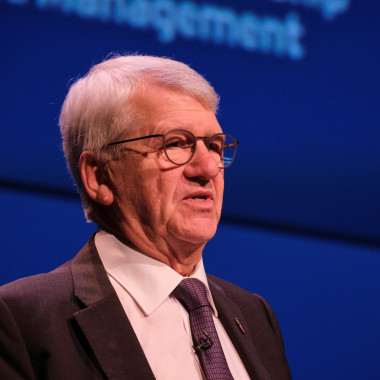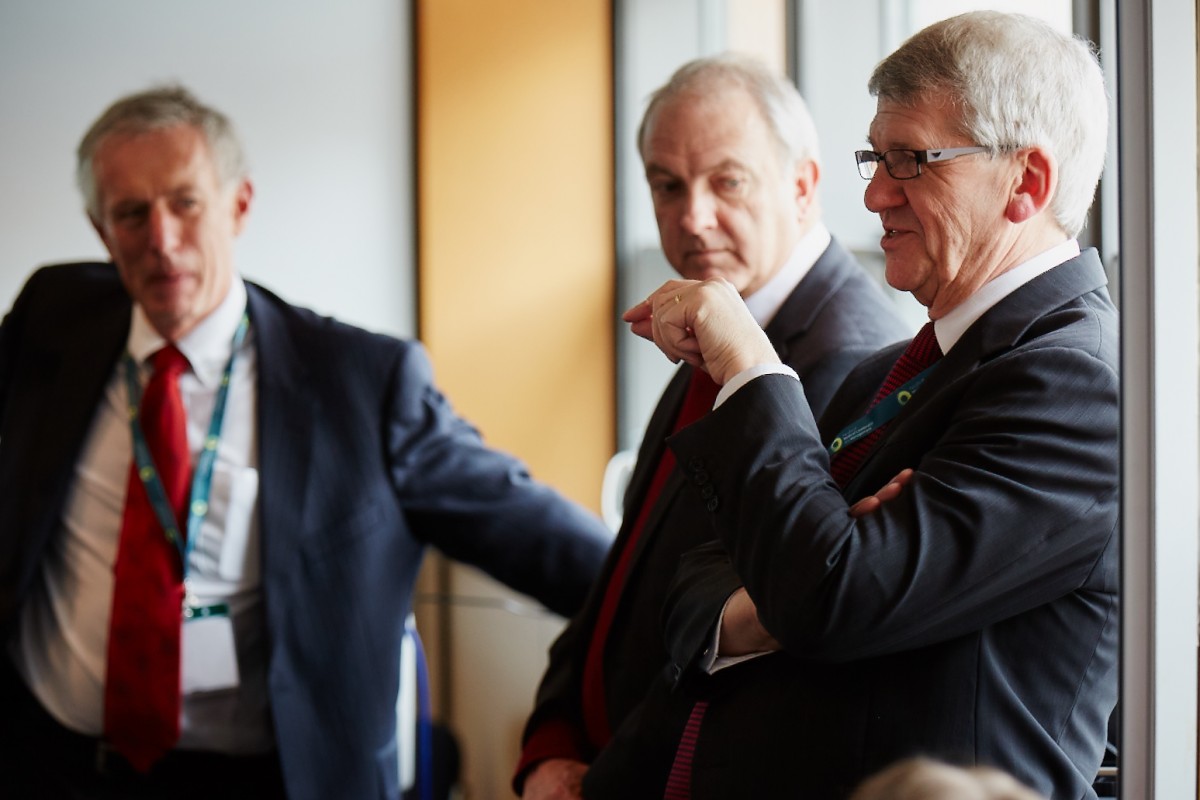On the shoulders of giants

By Peter Lees
FMLM Chief Executive
Celebration of FMLM’s first 10 years is muted by the pandemic but it is important to mark the event and acknowledge those whose efforts made this all possible when things could have turned out so differently (read on).
Over the coming months, leading up to the conference in November, we will hear from many of the early architects, but this edition rightly belongs to the two medical leadership giants whose vision and leadership made it all possible.
The late Professor Sir Neil Douglas was Chair of the Academy of Medical Royal Colleges and Professor Sir Bruce Keogh was the Medical Director of NHS England. Both have generously recorded their recollections of the beginnings of FMLM. Bruce has focused, in addition, on another tenth anniversary – that of the National Medical Director’s Clinical Fellow Scheme, produced and managed by FMLM, which has grown and diversified exponentially over the decade. Neil has focused on the background, rationale and early mandate for FMLM. I have written before that he was selflessly still writing his contribution two days before he died on 23 August 2020 and I am enormously grateful to his widow, Sue, for retrieving the copy which follows.
Founding of the Faculty of Medical Leadership and Management
By Professor Sir Neil Douglas, August 2020
Several times during my career, I felt the support given by clinical leaders was either ill-informed or too weak. For example, as an academic respiratory physician I set up the largest clinical sleep apnoea service in the UK with thousands of patients on home CPAP units funded by the hospital. I was phoned by the hospital CEO, who had never previously spoken to me, and summoned to a Board meeting in 10 days’ time to discuss his plans for closing my unit. I was scheduled to be speaking at a two-day meeting in Cape Town then, so asked to postpone, but was told this was impossible. Thus, I rearranged the meeting and my first trip to South Africa involved flying in overnight, giving three talks and chairing a session before flying back to Edinburgh that night. The next day, I used patient numbers and videos of patient experiences to win my case to keep the service running.
My take from this was that the clinician input to medical management was often weak and ineffective and that there was an imperative to improve the quality of clinicians going into management by improving their training and skills. This was one of the three platforms I used to be elected President of the Royal College of Physicians of Edinburgh in 2004 and Chairman of the Academy of the UK Medical Royal Colleges (AoMRC) in 2009. Once appointed to the latter role I extended discussions I had had with the British Association of Medical Managers as to how they could be brought into the royal college system to become a specialty standards setting organisation. We explored various options but did not agree a solution other than to continue working together. I met with Prof (later Sir) Bruce Keogh, NHS England Medical Director at the time, along with Alastair Henderson, the newly appointed CEO at the AoMRC.

Prof Keogh and I agreed it was imperative to have a body promoting the recruitment and training of the best possible doctors wishing to contribute to medical management in the UK. It was vital to stress the importance of seeing a career in medical management at least as attractive as other medical careers and to underscore the success of incorporating doctors in the management of healthcare systems of other countries. We agreed that the UK system should incorporate inputs from the NHS Institute for Innovation and Improvement and be a standard setting body loosely based on the medical royal colleges. Prof Keogh invited the AoMRC to make a submission to take forward work on the role, training, accreditation and revalidation of medical managers. An AoMRC submission was made to the Department of Health in February 2010. This included the following points.
1. Proposed functions of a Faculty of Medical Leadership and Management
There is a growing view from many of the organisations involved that one body should be held responsible for providing high-level leadership to the whole continuum of medical leadership, from undergraduate through postgraduate to continuing practice for all medical practitioners as well as those who take on medical management and leadership roles. It is not envisaged that this is a delivery body rather that it is one that should work closely with each medical royal college as well as regulatory bodies, policy makers, Department of Health Leadership Council and all other bodies involved in management and leadership development.
It is suggested that the following initial list of functions be used as the basis for wider consultation on the establishment of this integrating body or Faculty of Medical Leadership and Management.
2. Emerging list of functions
- Giving a clear focus for medical management and leadership at all levels in the medical profession ie both practitioner and positional roles
- Advising medical professional, regulatory and educational bodies on management and leadership competences for medical students and practitioners and options for education, curricula, and assessment
- Representing those in medical positional roles eg by advising on the role, competences, training requirements, credentialing and validation
- Providing a voice for medical managers and leaders through a properly constituted membership structure
- Source of advice and expertise on medical management and leadership eg to the Department of Health, NHS, medical royal colleges, etc
- Identifying national and international best practice on medical management and leadership
- Sponsoring research on medical management and leadership
- Providing advice on how to secure greater medical engagement as part of an overall cultural strategy based on improving quality, safety and productivity within NHS organisations.
There was general agreement within the AoMRC that something needed to be done to improve leadership and management among doctors and we set up a working group to scope suggestions. This was chaired by Dr Clare Gerada, incoming Chair of the Royal College of General Practitioners, and included Martin Else, CEO of the Royal College of Physicians in London. As there was no mechanism to create faculties of the AoMRC per se, it was agreed that the new body should become a faculty of each and every college and this was approved by the AoMRC meeting on 25 January 2011. By then, I had persuaded Mr Peter Lees, Medical Director at South Central Strategic Health Authority, to become Medical Director of the Faculty (FMLM) and this appointment was warmly welcomed by the AoMRC. The Founding Council of FMLM was then set up under my chairmanship, comprising a representative from each college. I was then invited to Chair the FMLM itself, a role I held until 2017.